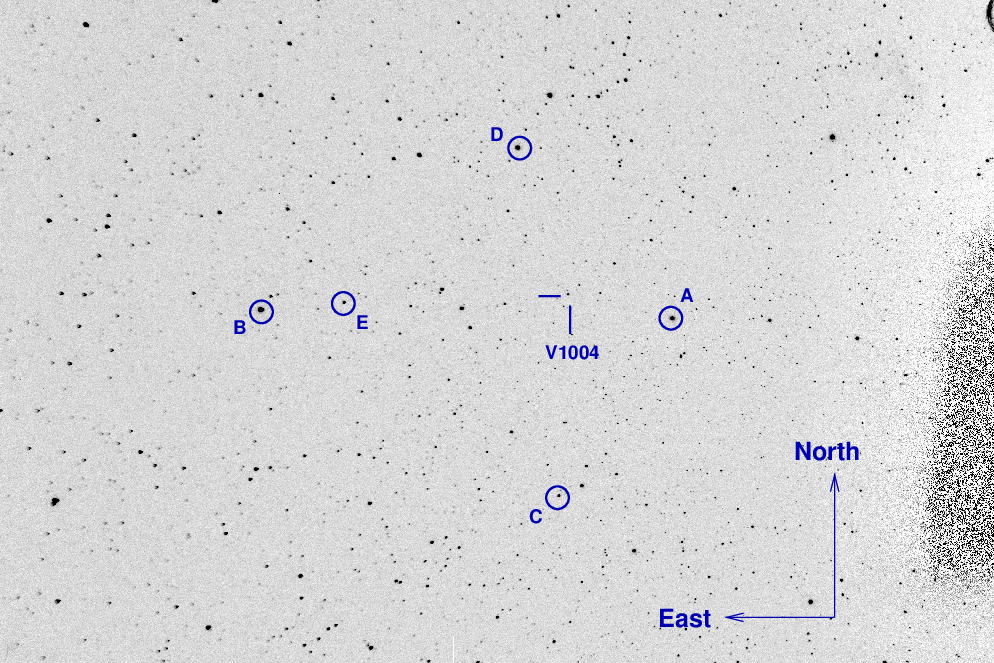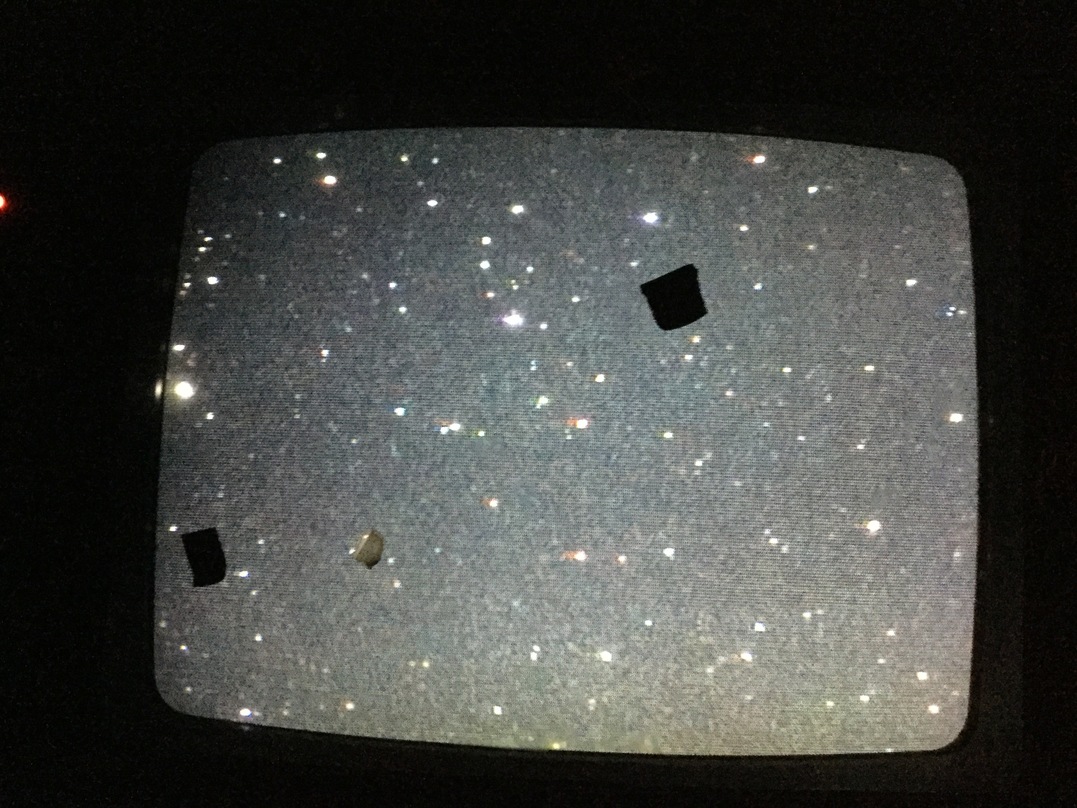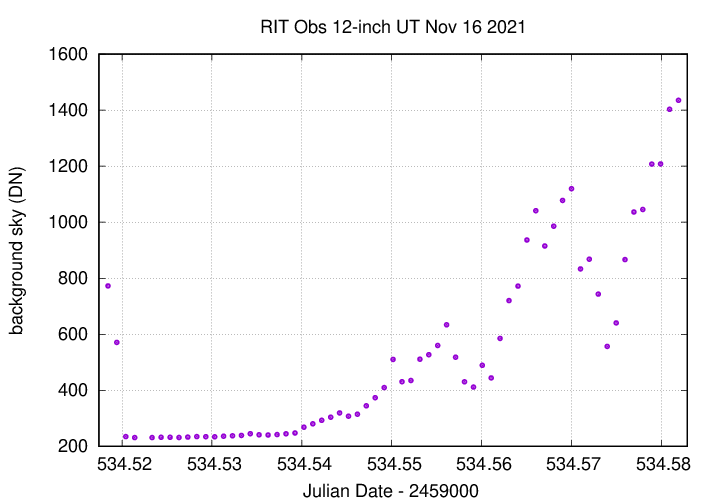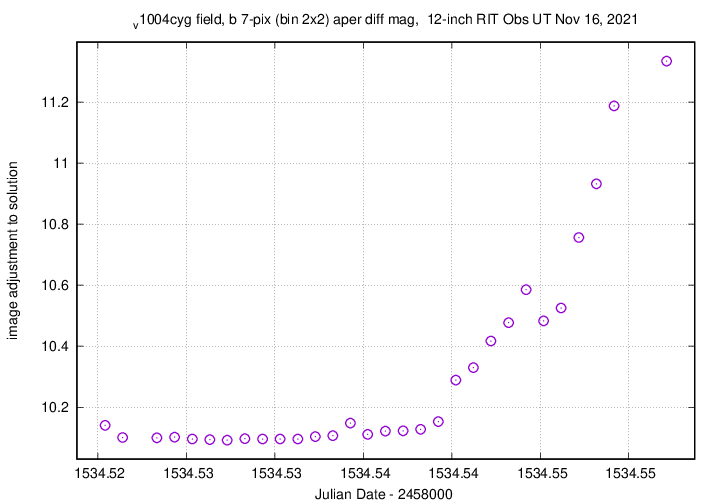
On the night of Nov 15/16, 2021, I observed the eclipsing binary star V1004 Cyg for one of our capstone projects. In the early evening, the star would go through a section its light curve that we had not yet observed.
It was raining when I arrived at the Observatory, but cleared eventually .... for one hour. Then the snow started. And that one hour ... was a portion of the light curve that we'd already observed.
Sigh.
We acquired images of the eclipsing binary system V1004 Cyg as part of a capstone project.
The main setup was:
Notes from the night:
The object is located at
RA = 19:50:29.44 Dec = +33:08:32.2 (J2000)
A chart of the field is shown below. The size of the chart is about 31 x 26 arcminutes.

I've marked the location of several comparison stars as well. You can find reference magnitudes for these stars at the AAVSO:
I used the star marked as "C" in the picture above, or "118" in the AAVSO charts, to shift the instrumental magnitudes to the standard scale.
| Label | B | V |
| C | 12.717 | 11.803 |
I took a photo of the finder TV's screen when pointing to this target; this could be a useful reference for the future:

The sky value shows the brief clear period before the clouds returned.

The FWHM graph below shows little change until the clouds hit.

Using aperture photometry with a radius of 10 pixels in B and V filters (binned 2x2, each pixel is 1.24 arcsec, so a radius of 12.4 arcsec), I measured the instrumental magnitudes of a number of reference stars and the target. Following the procedures outlined by Kent Honeycutt's article on inhomogeneous ensemble photometry, I used all stars available in each image to define a reference frame, and measured each star against this frame.
Sigma-vs-mag plots show that the floor was about 0.007 mag in B.

The change in zeropoint shows clouds thickening at the end of the run.

Last modified 11/16/2021 by MWR.